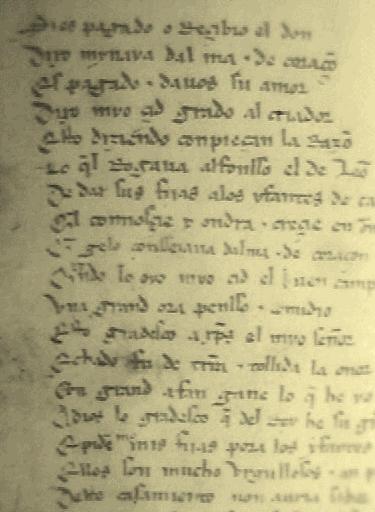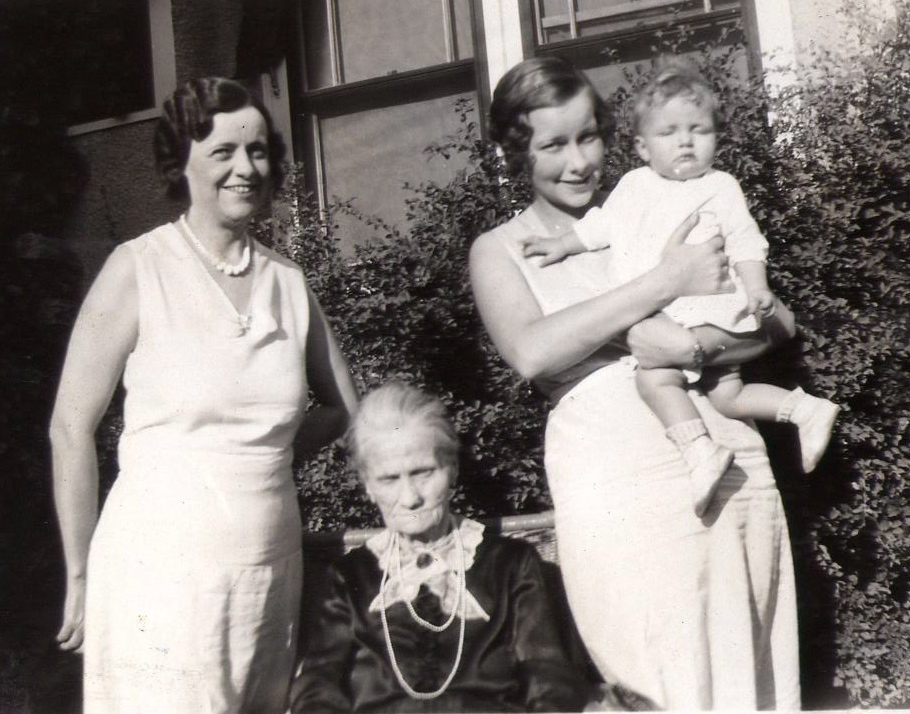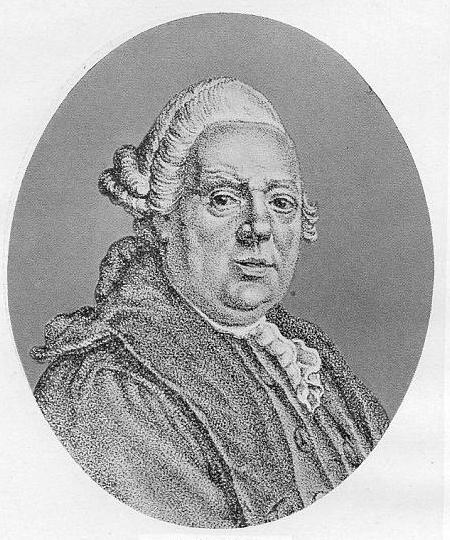|
Sevira Daughter Of Maximus
Sevira (a Vulgar Latin spelling of the Classical Latin name ''Severa'') was a purported daughter of the Roman Emperor Magnus Maximus and wife of Vortigern. She was mentioned on the fragmentary, mid- ninth century C.E. Latin inscription of the Pillar of Eliseg in the ancient commote of Yale, near Valle Crucis Abbey, Denbighshire, Wales. The inscription was commissioned by Cyngen ap Cadell (died 855), king of Powys, in honour of his great-grandfather Elisedd ap Gwylog (reign 725–755), who is here claimed to be a descendant of "Britu son of Vortigern, whom Germanus blessed, and whom Sevira bore to him, daughter of Maximus the king, who killed the king of the Romans." The Pillar of Eliseg inscription is the only known source for a daughter of Magnus Maximus specifically named Sevira (or Severa). However, Geoffrey Ashe noted in 1960 that "A letter of St. Ambrose gives us a scrap of information about aximus'sdaughters. After his fall they were thrown on the charity of Theodosius The ... [...More Info...] [...Related Items...] OR: [Wikipedia] [Google] [Baidu] |
Vulgar Latin
Vulgar Latin, also known as Colloquial, Popular, Spoken or Vernacular Latin, is the range of non-formal Register (sociolinguistics), registers of Latin spoken from the Crisis of the Roman Republic, Late Roman Republic onward. ''Vulgar Latin'' as a term is both controversial and imprecise. Spoken Latin existed for a long time and in many places. Scholars have differed in opinion as to the extent of the differences, and whether Vulgar Latin was in some sense a different language. This was developed as a theory in the nineteenth century by François Just Marie Raynouard, Raynouard. At its extreme, the theory suggested that the written register formed an elite language distinct from common speech, but this is now rejected. The current consensus is that the written and spoken languages formed a continuity much as they do in modern languages, with speech tending to evolve faster than the written language, and the written, formalised language exerting pressure back on speech. ''Vulgar ... [...More Info...] [...Related Items...] OR: [Wikipedia] [Google] [Baidu] |
Denbighshire
Denbighshire ( ; ) is a county in the north-east of Wales. It borders the Irish Sea to the north, Flintshire to the east, Wrexham to the southeast, Powys to the south, and Gwynedd and Conwy to the west. Rhyl is the largest town, and Ruthin is the administrative centre. Its borders differ from the historic county of the same name. Denbighshire has an area of and a population of 95,800, making it sparsely populated. The most populous area is the coast, where Rhyl and Prestatyn form a single built-up area with a population of 46,267. The next-largest towns are Denbigh, Ruthin, and Rhuddlan, while St Asaph is its only city. All of these settlements are in the northern half of the county; the south is even less densely populated, and the only towns are Corwen and Llangollen. The geography of Denbighshire is defined by the broad valley of the River Clwyd, which is surrounded by rolling hills on all sides except the north, where it reaches the coast. The Vale of Clwyd, th ... [...More Info...] [...Related Items...] OR: [Wikipedia] [Google] [Baidu] |
Daughters Of Roman Emperors
A daughter is a female offspring; a girl or a woman in relation to her parents. Daughterhood is the state, condition or quality of being someone's daughter. The male counterpart is a son. Analogously the name is used in several areas to show relations between groups or elements. From biological perspective, a daughter is a first degree relative. The word daughter also has several other connotations attached to it, one of these being used in reference to a female descendant or consanguinity. It can also be used as a term of endearment coming from an elder. In patriarchal societies, daughters often have different or lesser familial rights than sons. A family may prefer to have sons rather than daughters and subject daughters to female infanticide. In some societies, it is the custom for a daughter to be 'sold' to her husband, who must pay a bride price. The reverse of this custom, where the parents pay the husband a sum of money to compensate for the financial burden of the woma ... [...More Info...] [...Related Items...] OR: [Wikipedia] [Google] [Baidu] |
Theodosius
Theodosius ( Latinized from the Greek "Θεοδόσιος", Theodosios, "given by god") is a given name. It may take the form Teodósio, Teodosie, Teodosije etc. Theodosia is a feminine version of the name. Emperors of ancient Rome and Byzantium *Theodosius I (347–395; "Theodosius the Great"), son of Count Theodosius *Theodosius II (408–450) * Theodosius III (715–717) *Theodosius (son of Maurice) (583/585–602), eldest son and co-emperor of the Byzantine emperor Maurice Popes of the Coptic Orthodox Church * Pope Theodosius I of Alexandria (d. 566) * Pope Theodosius II of Alexandria (d. 742) * Pope Theodosius III of Alexandria (d. 1300) Patriarchs of Alexandria * Patriarch Theodosius I of Alexandria (535–567) * Patriarch Theodosius II of Alexandria (12th century) Other clergy and monastics In chronological order: *Theodosius, bishop of Philadelphia in Lydia, deposed at the Council of Seleucia, 359 * Theodosius the Cenobiarch (c. 423–529), a monk, abbot ... [...More Info...] [...Related Items...] OR: [Wikipedia] [Google] [Baidu] |
Ambrose
Ambrose of Milan (; 4 April 397), venerated as Saint Ambrose, was a theologian and statesman who served as Bishop of Milan from 374 to 397. He expressed himself prominently as a public figure, fiercely promoting Roman Christianity against Arianism and paganism. He left a substantial collection of writings, of which the best known include the ethical commentary ''De officiis ministrorum'' (377–391), and the exegetical (386–390). His preaching, his actions and his literary works, in addition to his innovative musical hymnography, made him one of the most influential ecclesiastical figures of the 4th century. Ambrose was serving as the Roman governor of Aemilia-Liguria in Milan when he was unexpectedly made Bishop of Milan in 374 by popular acclamation. As bishop, he took a firm position against Arianism and attempted to mediate the conflict between the emperors Theodosius I and Magnus Maximus. Tradition credits Ambrose with developing an antiphonal chant, known as Ambros ... [...More Info...] [...Related Items...] OR: [Wikipedia] [Google] [Baidu] |
Elisedd Ap Gwylog
Elisedd ap Gwylog (died c. 755?), also known as Elise, was king of Kingdom of Powys, Powys in eastern Wales, son of Gwylog ap Beli. Little has been preserved in the historical records about Elisedd, who was a descendant of Brochwel Ysgithrog. He appears to have reclaimed the territory of Powys after it had been overrun by the English. His great-grandson, Cyngen ap Cadell, erected a column in his memory which stands not far from the later abbey of Valle Crucis Abbey, Valle Crucis. This is known as the Pillar of Eliseg, but the form ''Eliseg'' which appears on the column is thought to be a mistake by the carver of the inscription. The Latin inscription on the pillar is now very hard to read, but was apparently clearer in the time of Edward Lhuyd, who transcribed it. The translation of the part of the inscription referring to Elisedd is as follows: : + Cyngen ap Cadell, Concenn son of Catell, Catell son of Brochmail, Brochmail son of Eliseg, Eliseg son of Guoillauc. : + And that ... [...More Info...] [...Related Items...] OR: [Wikipedia] [Google] [Baidu] |
King Of Powys
This is a list of rulers in Wales (; and neighbouring regions) during the Middle Ages, between . The rulers were monarchs who ruled their respective realms, as well as those who briefly ruled the Principality of Wales. These former territories are now within the boundaries of modern-day Wales and the neighbouring Welsh Marches in England (both in the United Kingdom). Before the Conquest of Wales, completed in 1283, Wales consisted of several independent realms, the most important being Gwynedd, Powys, Deheubarth (originally Ceredigion, Seisyllwg and Dyfed) and Morgannwg (Glywysing and Gwent). Boundary changes and the custom of dividing patrimonies between heirs meant that few princes ever came close to ruling the whole of Wales. The names of those known to have ruled over one or more areas are listed below. Boundaries changed frequently. The only person known to have ruled all of Wales as a modern territory was Gruffydd ap Llywelyn (c. 1010–1063), a Prince of Gwynedd w ... [...More Info...] [...Related Items...] OR: [Wikipedia] [Google] [Baidu] |
Cyngen Ap Cadell
Cyngen ap Cadell (also spelled Concenn) was King of Powys from 808 until his death in 854 during a pilgrimage to Rome. Biography Cyngen was of the line of Brochwel Ysgithrog, and, after a long reign as king of Powys, he went on a pilgrimage to Rome and died there in 854. He is thought to be the first Welsh ruler to visit Rome after the healing of the breach between the Welsh branch of the Celtic Church and Rome over the date of Easter. Cyngen raised a pillar, originally a round-shafted cross, in memory of his great-grandfather Elisedd ap Gwylog which stands near the later abbey of Valle Crucis. This memorial had a lengthy inscription and is known as the Pillar of Eliseg owing to a typographical mistake by the original carver. Cyngen was the last of the original line of kings of Powys of the Gwertherion dynasty. He had three sons, but on his death Powys was annexed by Rhodri Mawr, ruler of Gwynedd Gwynedd () is a county in the north-west of Wales. It borders Ang ... [...More Info...] [...Related Items...] OR: [Wikipedia] [Google] [Baidu] |
Valle Crucis Abbey
Valle Crucis Abbey (Valley of the Cross) is a Cistercian abbey located in Llantysilio in Denbighshire, north Wales. More formally ''the Abbey Church of the Blessed Virgin Mary, Valle Crucis'' it is known in Welsh both as ''Abaty Glyn Egwestl'' and ''Abaty Glyn y Groes''. The abbey was built in 1201 by Madog ap Gruffydd Maelor, Prince of Powys Fadog. Valle Crucis was dissolved in 1537 during the dissolution of the monasteries, and subsequently fell into serious disrepair. The building is now a ruin, though large parts of the original structure still survive. Valle Crucis Abbey is now under the care of Cadw. The abbey received 5,690 visitors in 2018. History Valle Crucis Abbey was founded in 1201 by Madog ap Gruffydd Maelor,Davies (2008), pg528. and was the last Cistercian monastery to be built in Wales. Founded in the principality of Powys Fadog, in the ancient commote of Iâl (Yale), Valle Crucis was the spiritual centre of the region, while Dinas Bran was the political st ... [...More Info...] [...Related Items...] OR: [Wikipedia] [Google] [Baidu] |
Classical Latin
Classical Latin is the form of Literary Latin recognized as a Literary language, literary standard language, standard by writers of the late Roman Republic and early Roman Empire. It formed parallel to Vulgar Latin around 75 BC out of Old Latin, and developed by the 3rd century AD into Late Latin. In some later periods, the former was regarded as good or proper Latin; the latter as debased, degenerate, or corrupted. The word ''Latin'' is now understood by default to mean "Classical Latin"; for example, modern Latin textbooks almost exclusively teach Classical Latin. Cicero and his contemporaries of the late republic referred to the Latin language, in contrast to other languages such as Greek, as or . They distinguished the common vernacular, however, as Vulgar Latin (''sermo vulgaris'' and ''sermo vulgi''), in contrast to the higher register (sociolinguistics), register that they called , sometimes translated as "Latinity". ''Latinitas'' was also called ("speech of the good fa ... [...More Info...] [...Related Items...] OR: [Wikipedia] [Google] [Baidu] |
Pillar Of Eliseg
The Pillar of Eliseg – also known as Elise's Pillar or Croes Elisedd in Welsh – stands near Valle Crucis Abbey, Denbighshire, Wales [Grid reference ]. It was erected by Cyngen ap Cadell (died 855), king of Kingdom of Powys, Powys in honour of his great-grandfather Elisedd ap Gwylog. The form ''Eliseg'' found on the pillar is assumed to be a mistake by the carver of the inscription. History Whilst the pillar itself dates to the 9th century, the large artificial mound is thought to be significantly older, probably from the Bronze Age Britain, Early Bronze Age. Inscription The Latin inscription consisted of some thirty-one lines of insular script. It not only mentioned several individuals described in the ''Historia Brittonum'', but also complemented the information presented in that text. Considerable portions of the original inscription were read by the antiquarian Edward Lluyd in 1696 and his transcript seems to have been remarkably accurate according to Robert Vermaat of ... [...More Info...] [...Related Items...] OR: [Wikipedia] [Google] [Baidu] |
Latin Language
Latin ( or ) is a classical language belonging to the Italic languages, Italic branch of the Indo-European languages. Latin was originally spoken by the Latins (Italic tribe), Latins in Latium (now known as Lazio), the lower Tiber area around Rome, Italy. Through the expansion of the Roman Republic, it became the dominant language in the Italian Peninsula and subsequently throughout the Roman Empire. It has greatly influenced many languages, Latin influence in English, including English, having contributed List of Latin words with English derivatives, many words to the English lexicon, particularly after the Christianity in Anglo-Saxon England, Christianization of the Anglo-Saxons and the Norman Conquest. Latin Root (linguistics), roots appear frequently in the technical vocabulary used by fields such as theology, List of Latin and Greek words commonly used in systematic names, the sciences, List of medical roots, suffixes and prefixes, medicine, and List of Latin legal terms ... [...More Info...] [...Related Items...] OR: [Wikipedia] [Google] [Baidu] |







